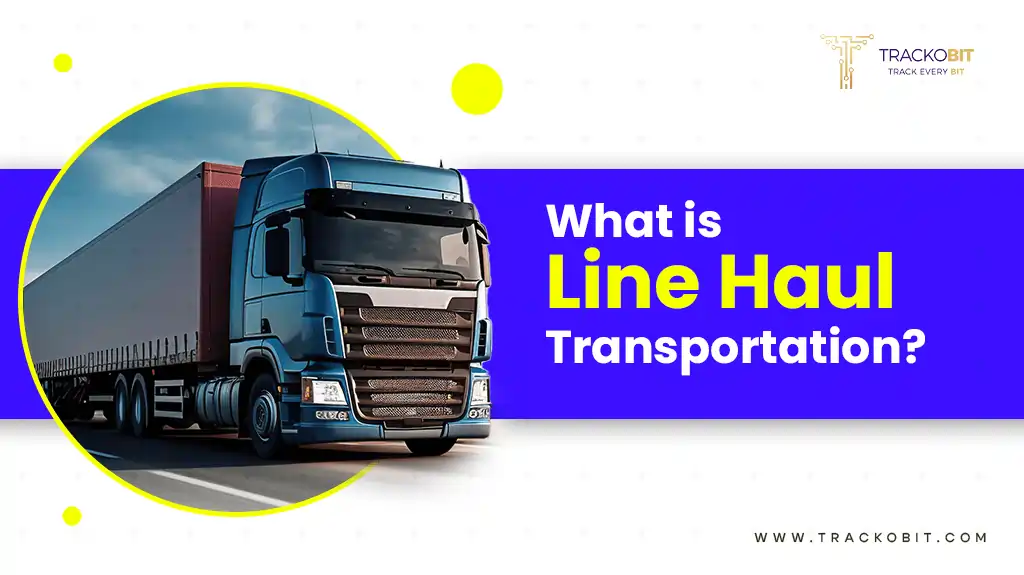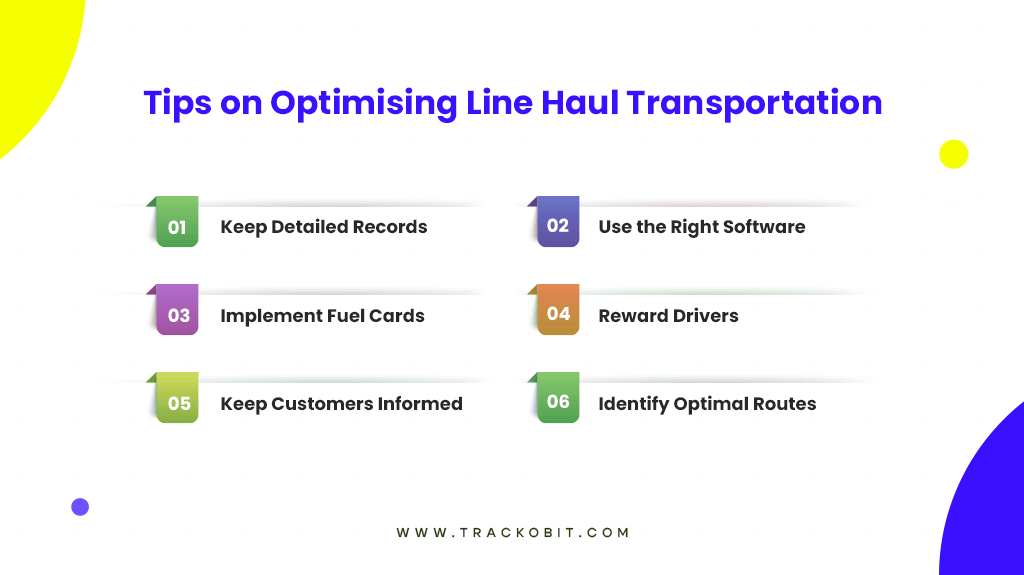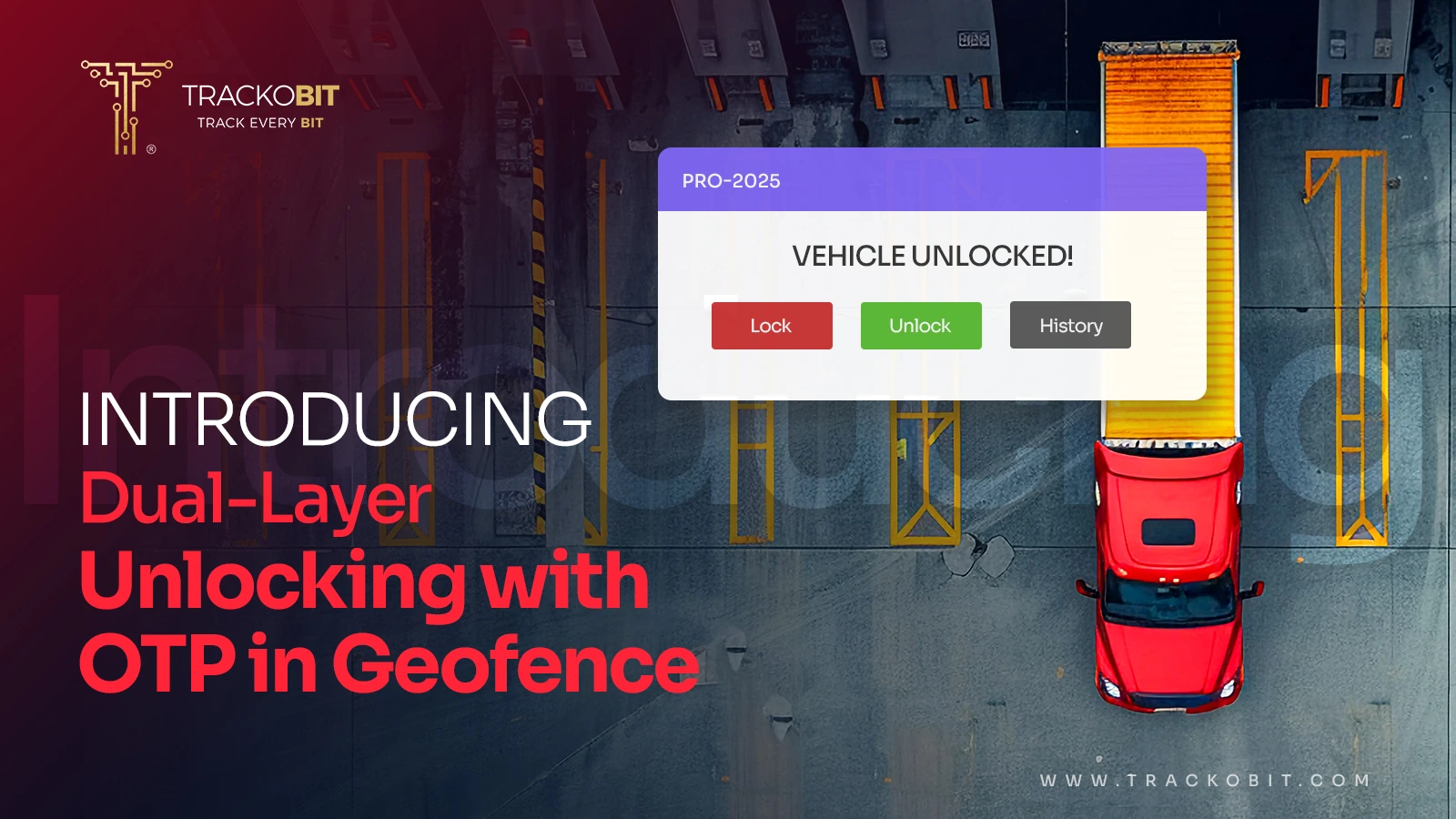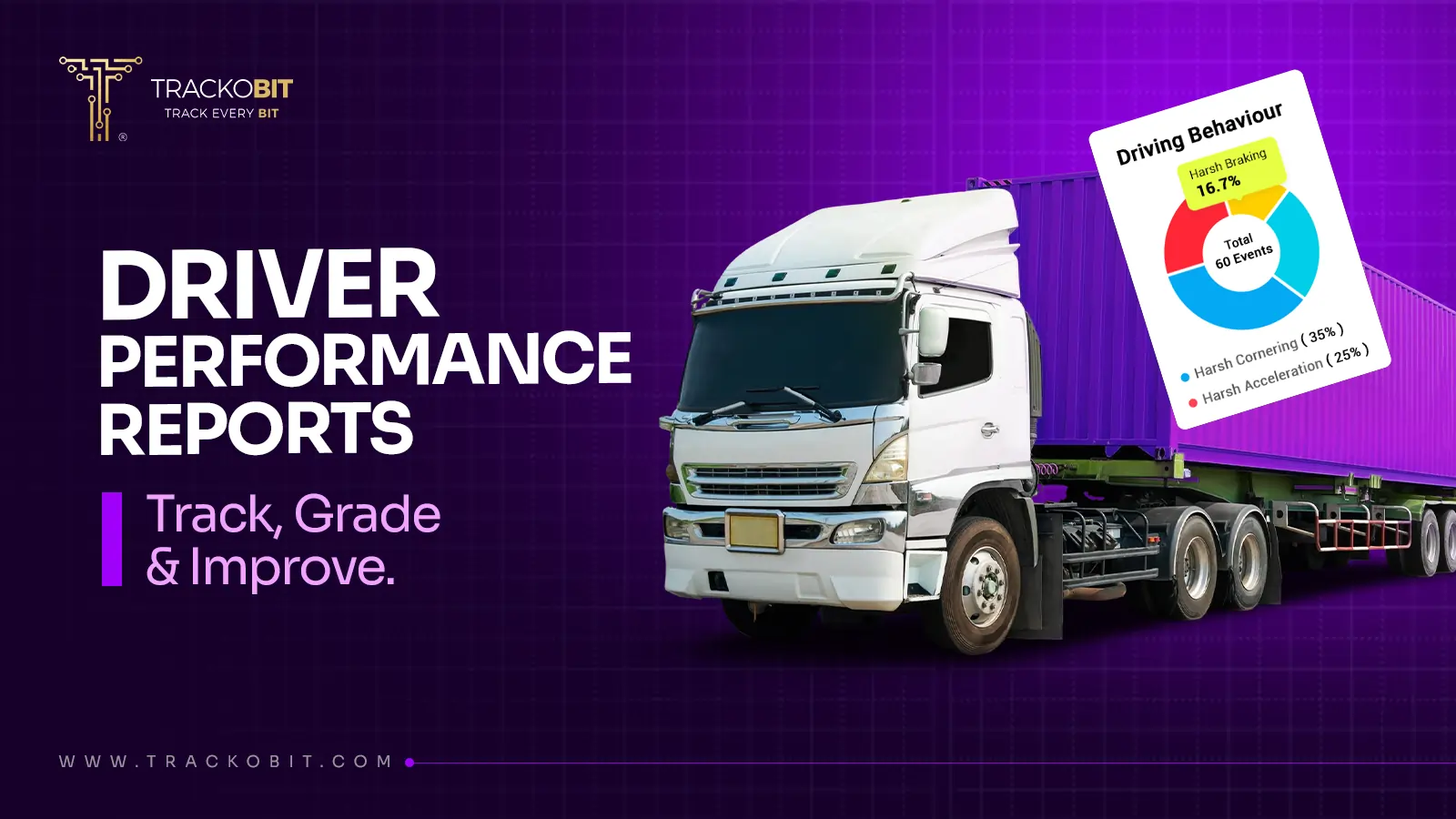-
TrackoBit
Manage commercial vehicles with the new-age Fleet Management Software
TrackoBit -
TrackoField
Streamline your scattered workforce with Field Force Management Software
TrackoField -
Features Resources
-
Blog
Carefully curated articles to update you on industrial trends. -
White Paper
Insightful papers and analysis on essential subject matters. -
Glossary
Explore an alphabetical list of relevant industry terms. -
What’s New
Get TrackoBit & TrackoField monthly updates here. -
Case Study
Explore the cases we solved with our diverse solutions. -
Infographics
Explore key topics through visually impactful infographics.
-
About Us
Get to know TrackoBit: our team, ethos, values, and vision. -
Careers
Join the most dynamic cult of coders, creatives and changemakers. -
Tech Support
Learn about our technical support team and services in detail. -
Events
Check out the exhibitions where we left our marks and conquered. -
Contact Us
Connect with us and let us know how we can be of service.
What is Line Haul Transportation?: Explained
- Author:Tithi Agarwal
- Read Time:9 min
- Published:
- Last Update: May 26, 2025
Table of Contents
Toggle
Line haul transportation – the perfect solution to getting the goods delivered from one port to another depot in less time and cost. Discover what it is and its benefits in this article.
Table of Contents
Toggle
A significant portion of the economy involves the transportation of products and services via trucks. Millions of tons of raw materials, completed items, and other products are transported annually by trucks, aeroplanes, trains, and ships using a variety of transportation techniques. One such trucking method is line haul transportation.
It forms an integral part of the supply chain as it fills the space between creation and distribution. In this article, we have explained what is time haul shipping process is and tips for optimising the service.
What is Line Haul Transportation?
Line haul logistics refers to the movement of freight across different modes of transportation–by road, by rail, by air and by waterways–in between cities. The load carried by these modes of transportation are not homogeneous in nature. The range varies from small packages to heavy pallets. CEP (courier, express and parcel) providers, less-than-truck-load (LTL) carriers and third party logistics providers receive goods/freight from their customers from a particular depot.
Goods with similar destinations are consolidated in long-distance trailers and sent to one or multiple distribution facilities for further categorisation and sorting. Then, at a sorting facility, the goods go through one more consolidation round before being dispatched to the final destination.
This entire chain of stakeholders and infrastructure, which includes drivers, dock executives, trucks, depots, hubs, distribution, and sorting facilities, is termed as a line haul transportation network. An important aspect of line haul network management is a line haul charge.
What is a Line Haul Carrier?
A linehaul carrier is an organisation that participates in the linehaul process, providing shipping services, management, quality assurance, and adherence to government regulations. Carriers are crucial in linehaul transportation because they perform processes and provide the necessary data for tracking linehaul logistics. Carriers adhere to Less Than Truckload (LTL) and Full Truckload (FTL) regulations to ensure swift delivery and quality care during the hauling process.
Importance of Line Haul Carrier Tracking
A key component of ensuring robust line haul services is employing software like fleet management software that offers real-time tracking. Such software empowers enterprises, carriers, and 3PLs to gain real-time visibility of line haul trucking operations. Stakeholders responsible for line haul delivery can gain critical insights into:
- Carrier performance
- SLA adherence
- Delivery duration
- Delivery success and failure rates
Line haul carrier tracking also improves customer experience by ensuring highly accurate ETAs, reduced delivery time with shorter and more efficient routes and delivery transparency. Line haul pickup tracking or express tracking helps customers know when exactly a parcel will arrive, drastically increasing first-attempt delivery success rates.
5 Advantages of Line Haul Transportation
Here the advantages that line
1. Faster Deliveries
A linehaul carrier can usually deliver freight more quickly than a traditional freight model could. Managers monitor the logistic process of every delivery, which enables them to continuously improve the goods shipping procedure to raise the efficiency and timeliness of every delivery.
For instance, if a manager tracks the average speed at which it makes deliveries, it can determine which roads or locations cause traffic jams and suggest an alternate route to its drivers, saving them both time and money on gas.
2. Better Customer Relationships
With linehaul transportation, the freight can be moved much more quickly, cheaply, and efficiently. Improved customer and goods carrier relations may arise from this, making the supply chain more effective. In addition to being better equipped to ensure the quality of each goods delivery, goods carriers will charge less for each delivery. Consumers value the lower prices and faster delivery of the goods and raw materials required for everyday business operations.
3. Reduced Costs
Most line haul transportation processes are backed with tracking software, which helps gain analytical data around the real-time status of the fleet. Fleet managers can gain insightful information into the vehicle’s location, miles travelled, engine speed, HOS (hours of service), and more. This way, the carrier can lower transport costs, all thanks to this timely analytical and insightful information about the transportation procedure.
The carrier can pass these savings along to the client by charging less for effective deliveries. For instance, if a carrier monitors the fuel efficiency of truck tyres and determines that Tyre A is more fuel-efficient than Tyre B, they can replace the tyres on each truck to create a fleet that uses less fuel and saves money on maintenance.
4. Better Communication Between Supply Chain Parties
Line haul transportation facilitates improved communication between the carrier, customers, and suppliers of goods by using analytics. With such transparent communication, businesses can timely act on delivery gaps, reduce possible mistakes, and simplify the comprehension of the entire transportation process with much-needed accuracy. Everyone benefits from lower costs and a much stronger supply chain as a result of this degree of communication.
5. Fewer Accidents or Errors
Truck drivers who operate in linehaul trucking are put in shifts to prevent burnout. Most of the time, they have defined hours of service or breaks between long routes – to prevent their exhaustion during transit. Both the drivers themselves and the freight transportation process are impacted in a number of ways by this. Drivers typically put in eight or nine hours in the morning and work until five or six in the evening. This lessens the likelihood of worker fatigue, which may increase workplace mistakes or accidents. In between shifts, allowing drivers to relax can improve the transportation system’s safety, efficiency, and cost-effectiveness.

6 Tips on Optimising Line Haul Services
1. Keep Detailed Records
Maintain thorough records of every delivery, including the weight, the delivery time, the designated driver, the destination, and the client. To get the most out of your knowledge of the company’s shipping capabilities, you can also keep track of the capacity of every vehicle in your fleet and every depot or sorting facility.
2. Use the Right Software
Truck tracking software can help you track important analytics for each delivery and optimise your freight transportation process. There are hundreds of digital tools available for freight carriers.
3. Implement Fuel Cards
Fuel cards are the preferred way companies have drivers pay for fuel. These cards look like credit cards, but there are important differences between fuel and credit cards.
When you sign up with a fuel card program, you will receive fuel cards for all current drivers and a clear, easy way to obtain additional cards. Some contractors will have a unique card for each individual driver, and some will choose to designate a card to the vehicle instead. The overall point is that you have one, and drivers should use this card (and this card only) to refuel their fleet vehicle.
4. Reward Drivers
Rewarding drivers with a competitive salary and benefits package can help increase their productivity and company loyalty and encourage qualified candidates to join your team. Offer rewards for high performance and extra effort to show drivers you notice their hard work.
5. Keep Customers Informed
Inform customers of delivery times, delays and other information about their freight. This helps support the relationship between you and your customers and promotes a more efficient supply chain.
6. Identify Optimal Routes
Identifying the optimal delivery routes on land, air or by sea helps you ensure that you’re delivering freight on time while optimising the journey to control costs and save the company and the customer money.
The difference Between Long Haul and Line Haul Trucking
Line Haul |
Long Haul |
| Line haul transportation refers to the movement of goods or passengers between two points, typically over a relatively short to medium distance, often within a specific region or corridor. | Long haul transportation involves the movement of goods or passengers over much longer distances, often across state lines or even between different countries. |
| Line haul routes usually connect major hubs or points along a specific route. | Long haul routes cover extensive geographical areas and may involve crossing borders, requiring compliance with international regulations. |
| The primary focus is on transporting goods or passengers efficiently and quickly over the designated route. | The transportation mode for long hauls can include trucks, trains, ships, or airplanes, depending on the nature of the cargo and the distance to be covered. |
| Line haul carriers often operate on a regular schedule, making frequent trips between predetermined locations. | Long haul carriers typically operate on less frequent schedules compared to line haul carriers, as the distances involved require more time for transportation. |
| Examples include local or regional courier services, urban transit systems, and short-distance freight carriers. | Examples include cross-country trucking, intercontinental shipping, and air cargo services that cover significant distances. |
What is Line Haul Cost?
The term “line haul charge” describes the expense of shipping. The distance between the pickup and the destination determines the cost of transportation or shipping. Freight loading and unloading are not included in the line haul charge. These hold true for travel over long distances. The entire weight of the goods determines the cost of shipping as well.
Depending on the mode of transportation, the price varies. Mileage is taken into consideration when it comes to trucks and road transportation. The logistics cost for by-air freight transportation is determined in addition to the freight weight and mileage.
Utilizing Technology for Faster Delivery
TrackoBit, a fleet management software, is helping logistics companies optimise their line haul operations to make it more time and cost-effective. With solutions like real-time tracking, fuel monitoring, trip planning and video telematics, the service’s productivity increases multifold.
Efficient Route Planning
Efficient route planning with TrackoBit helps determine the best route for a vehicle. In a blink, it can suggest the most suitable route for the line haul trip. Also, since line haul consists of regular trips, companies can save the route. This helps with auto-assigning routes. The aim is to find the shortest or quickest route possible.
The fleet management software helps improve line-haul transportation efficiency by reducing miles driven, fuel consumption, and emissions. It can also help to save time and money by avoiding traffic congestion and finding the most efficient route.
Monitor Driver Performance
The software can play a role in monitoring the driving performance of line-haul transportation drivers. This data can also be used to create targeted training programs that help drivers stay safe on the road. TrackoBit offers video telematics and driver behaviour monitoring solutions to help line haul carrier be in sync with driver activities.
Additionally, driver scorecard helps in recognising and rewarding good driver performance
In addition to improving safety, this technology can also help improve efficiency. By understanding how drivers are using their time and resources, companies can make changes to routes and schedules that help everyone save time and money.
Automate Schedule
TrackoBit can be used to automate the schedule for long-haul transportation drivers. This can help ensure that drivers are able to stick to their schedules and make the most efficient use of their time. Automating the scheduling and trip-assigning process can also help reduce the chances of errors, which can lead to delays or cancellations.
Conclusion
Line haul transportation is essential for businesses to get their goods moved from one place to another. Carriers offering this service are constantly trying to improve it be it through advanced strategies or technological adoption. Fleet management software is proving useful in this as it enhances the visibility and efficiency of the line haul process.
TrackoBit’s fleet management solution offers solutions such as route planning, video telematics and driver behaviour monitoring, thus making it more cost efficient and customer focussed.
Tithi Agarwal is an established content marketing specialist with years of experience in Telematics and the SaaS domain. With a strong background in literature and industrial expertise in technical wr... Read More
Related Blogs
-

How to Use Driver Behavior Reports as a Sales Hook to Close Big Fleets
Tithi Agarwal October 16, 2025TrackoBit’s driver behavior reports empower fleet providers to win big contracts by showcasing safety, efficiency, and measurable ROI.
-

TrackoBit’s Unlocking in Geofence with OTP: Elevating Cargo Protection
Tithi Agarwal September 16, 2025TrackoBit’s latest feature – Unlocking in Geofence with OTP lets you lock out theft and unlock cargo only at the…
-

The Rise of Electric Fleets: Challenges and Opportunities for Businesses
Tithi Agarwal September 4, 2025The global fleet landscape is poised for a decade-long transformation. This change is being powered by electricity. Logistics-led businesses are…
-

Who’s Really Behind the Wheel? Unlocking Insights with Driver Performance Reports
Tithi Agarwal August 27, 2025Identify top-performing drivers, monitor violations, and grade skills with the driver performance report. This makes fleet operations more transparent and…

Subscribe for weekly tips to optimize your fleet’s potential!
Your inbox awaits a welcome email. Stay tuned for the latest blog updates & expert insights.
"While you're here, dive into some more reads or grab quick bites from our social platforms!"Stay Updated on tech, telematics and mobility. Don't miss out on the latest in the industry.
We use cookies to enhance and personalize your browsing experience. By continuing to use our website, you agree to our Privacy Policy.



































